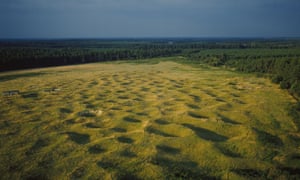via Boing Boing by Rob Beschizza

Commodore’s C64 had a famously decisive, if drab set of 16 colors to choose from, a note of artistic intent amid the unthinking mathematical extremities of other 8-bit color palettes. But did you know there were secret colors? Aaron Bell writes up a discovery that blew his mind many years ago and which, 26 years later, he’s finally figured out.
Continue reading
=============================
Bees Have Emotions and Moods. But Do They Have Feelings and Consciousness?
via Big Think by Philip Perry

A bee on a flower. Getty Images.
The honeybee is in deep trouble. Colony collapse disorder (CCD), a condition whose cause isn’t known, has occurred in 42% of colonies within the US, since 2015. CCD occurs when worker bees mysteriously disappear, leaving a queen and her young with no one to tend to them. Invasive species, the loss of habitat, gut parasites, certain pesticides, and other causes have been considered, but nothing is definitive yet.
Continue reading
=============================
Before filing cabinets, we had the coolest desks
via Boing Boing by Cory Doctorow

The “rotary desk” went out of style with the advent of filing cabinets, but in their heyday, they were marvels of rotating cabinetry, tiny clever drawers and cubbies, and roll-down secretary tops.
Continue reading
=============================
The February Revolution and Kerensky’s Missed Opportunity
via 3 Quarks Daily: John Quiggin in the NYT

Aleksandr Kerensky reviewing the troops in 1917. Keystone/Gamma, via Getty Images
The February Revolution is one of history’s great “What if” moments. If this revolution – which actually took place in early March 1917 according to the West’s Gregorian calendar (Russia adopted that calendar only later) – had succeeded in producing a constitutional democracy in place of the czarist empire as its leaders hoped, the world would be a very different place.
Continue reading
=============================
A Short Analysis of William Blake’s ‘The Tyger’
via Interesting Literature
A critical reading of an iconic poem
‘The Tyger’ is arguably the most famous poem written by William Blake (1757-1827); it’s difficult to say which is more well-known, ‘The Tyger’ or the poem commonly known as ‘Jerusalem’. The poem’s opening line, ‘Tyger Tyger, burning bright’ is among the most famous opening lines in English poetry (it’s sometimes modernised as ‘Tiger, Tiger, burning bright’).
Continue reading
=============================
In war, the earth matters
via OUP Blog by Richard Bardgett

The War The Military Defense by Jarmoluk. Public domain via Pixabay.
Many factors influence the outcome of war. But what has soil got to do with war? I suspect few have given much thought to the influence of soil on war, or, conversely, how war influences the soil. But the role of soil in warfare can be considerable, as can the impact of war on soil, which can often leave it unusable.
Continue reading
=============================
Prehistoric Norfolk mine Grime’s Graves to open second pit to public
Tourists will be winched deep underground to see 4,000-year-old site where Neolithic miners used antlers to hack out flint
via the Guardian by Maev Kennedy

The remains of the ancient pits created an extraordinary pockmarked landscape.
Photograph: English Heritage/PA Wire
A challenging descent by ladder, winch and harness into a prehistoric underworld will open to the public for the first time this year, allowing exploration of shafts and galleries cut deep under Norfolk heathland more than 4,000 years ago.
The extraordinary surface landscape of Grime’s Graves, pockmarked with hundreds of shallow depressions, puzzled people for many centuries until they were identified about 150 years ago as neolithic flint mines.
Continue reading
=============================
Algorithmic Approaches to Sorting Out Your Bookshelf
via Scholarly Kitchen by David Crotty
Sitting in my ever-cluttered office, the idea of one day having the time to sort out my bookshelves seems a wonderful, but likely unattainable dream. But suppose something magical happens – what would be the quickest way to get my books organized?
The video [via the link] below sets up the following situation: you work in a library and a shipment of 1,280 books arrives. You need to get them in alphabetical order as quickly as possible. It then walks through different sorting methods: a bubble sort, insertion sort, and a quick sort. At the end, the comparison is made to how these methods relate to computational algorithms used to sort data.
Continue reading
=============================
Why a cat’s tongue is covered with tiny claws that feel like sandpaper
via Boing Boing by David Pescovitz

Cats’ tongues are covered in little spines called “papillae” that look like tiny hooks. Cats use their tongues to groom and the spines do a great job of detangling knots…
Continue reading
If you think that magnification produces a scary image just wait until you see only a very few papillae!!
But these are followed by a cute cat GIF.
=============================
Hidden crystals offer clue to a geological riddle
via the Guardian by Kate Ravilious

Surrounded by idyllic turquoise sea, Mauritius may hold a hidden secret. Photograph: Alamy
Oceanic crust lives fast and dies young, usually being dragged down a subduction zone after 250m years or so. By contrast, continental crust lives to a ripe old age, with some of the oldest continental crust on Earth – dating to 4bn years – found in Canada and Greenland.
But geologists have long been puzzled as to why there isn’t more continental crust bobbing around. Now new research indicates that some of it might be hidden underneath ocean-island volcanoes.
Continue reading
=============================
What Orwell discovered in the North
via Arts & Letters Daily: Stephen in Prospect

©BNUJ
“Mr. Orwell must have wasted a lot of energy trying to be a novelist. I think I must have read three or four novels by him and the only impression these dreary books left on me was that nature didn’t intend him to be a novelist.” This was QD Leavis writing in 1940 – by which time Orwell had written three novels, Burmese Days, Keep the Aspidistra Flying and A Clergyman’s Daughter: doubtful if these would have earned him more than a footnote in a review of the literature of the 1930s. So when and how did this average novelist become a writer of such global impact? It all began 80 years ago, on 8th March to be exact, when The Road to Wigan Pier was published.
Continue reading
No comments:
Post a Comment